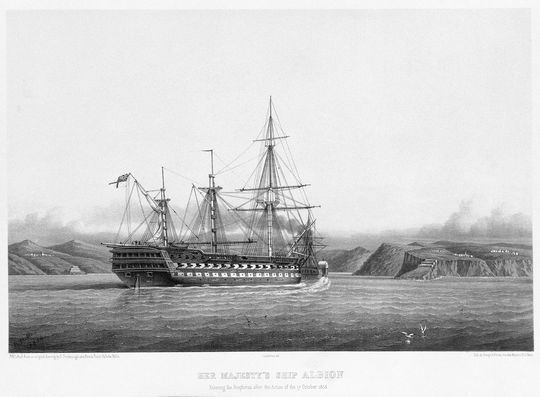Name HMS Albion Laid down 13 August 1839 Construction started 13 August 1839 Length 62 m Builder Plymouth Dockyard | Ordered 21 June 1839 Fate Broken up, 1884 Launched 6 September 1842 Tons burthen 2.822 million kg | |
 | ||
Displacement 4000 tons (4064.2 tonnes) | ||
HMS Albion was a 90-gun second rate ship of the line of the Royal Navy. Ordered in 1839, she was built at Plymouth and launched on 6 September 1842, and entered service in 1843. Albion was designed by Sir William Symonds, was the only ship of her class to ever serve as a sailing ship, and the last British two-decker to complete and enter service without a steam engine. She was the name ship of a class of three second rates—the others being Aboukir and Exmouth.
Her first military action was in the Crimean War during the siege of Sevastopol on 17 October 1854. While Albion's commanding officer, Captain Stephen Lushington, was commanding a Naval Brigade providing vital heavy artillery support for the Allied forces besieging Sevastopol, Albion under the command of Commander Henry Rogers joined over 50 British and French warships of various types into action. The Russians suffered heavy casualties but the Allies had failed to seriously damaged the batteries, though the Anglo-French fleet had received comparatively light casualties, with about 500 killed or wounded in total. However, the Allies had taken a beating from the Russian batteries, and Albion had been set on fire three times during the engagement. Without the assistance of the courageous tugs, she would surely have succumbed to her damage and run aground.
From 1860 until 1861 she was converted to steam screw propulsion at Devonport, but the modifications were never finished. She was kept in reserve in Devonport for more than twenty years, before the decision was made to scrap her, and she was finally broken up at Devonport in 1884.
